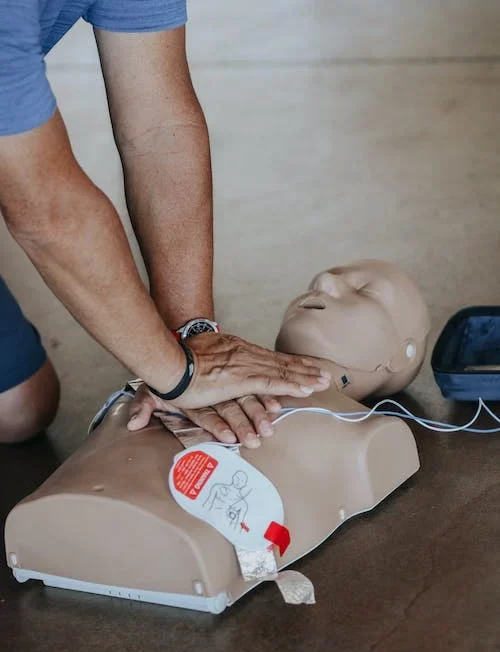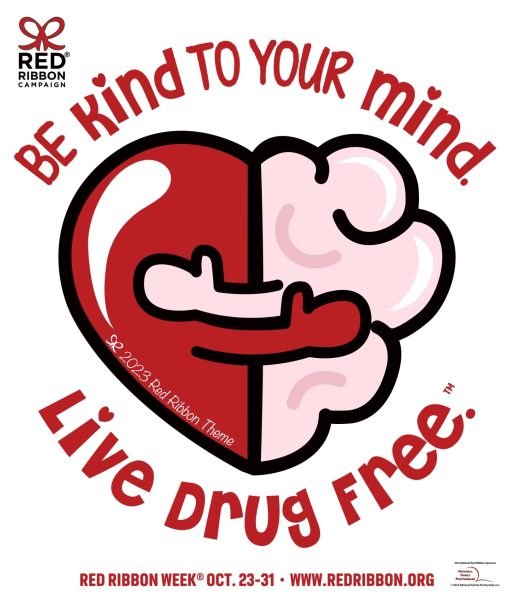CPR saves lives
Image courtesy of Raven Domingo via Pexels
Becoming CPR certified is highly beneficial and can mean the difference between life and death.
January 27, 2023
On January 2nd, 2023, NFL’s Buffalo Bills safety, Damar Hamlin, collapsed on the field in cardiac arrest. The terrifying event happened unexpectedly as a result of a tackle that occurred during the game. Fortunately, each NFL game has a procedure to deal with such situations. Hamlin received immediate attention from medical professionals on the field who were able to administer CPR and stabilize his heartbeat, which allowed him to be transferred to a local hospital.
Near-death experiences are terrifying, especially considering that every second counts to solidify survival. That is why people need to learn procedures to save a life if one of these occurrences does happen. This could be the decision that will determine life and death. Hamlin, a professional athlete, is probably more physically fit and healthier than most people, yet he suffered a cardiac episode. In the United States, heart disease is one of the leading causes of death. About 697,000 deaths occurred in 2020, which is 20% of all deaths according to Heart Disease Facts.
To perform a successful life-saving procedure on a person who seeks immediate attention with breathing that is a result of a near-drowning event, suffocation, or cardiac event, you need CPR certification. CPR stands for cardiopulmonary resuscitation, and certification can be earned in a course near your area.
Courses to obtain certification can be taken at local hospitals, community health centers, community colleges, and fire departments.
The procedure consists of compressing the chest to create ventilation. Individuals who are certified usually perform these procedures in local hospitals, but oftentimes, CPR needs to be administered in the area of occurrence. Immediate attention is the most important factor for a full recovery.
Before signing up for a class, be sure to know all the options.
CPR certification classes can be taken online, in person, or through blended courses. Online classes are the most convenient, yet these certifications may not be recognized by certain workplaces since there is no physical component to the certification.
For online courses, certification is based on an 80% score on the written test only. In-person classes provide a hands-on approach to learning, and as part of those courses, individuals must demonstrate CPR for the instructor as well as pass the certification test.
Finally, the blended course provides both an online class and an in-person course, which allows individuals to train for CPR online, while still having the ability to perform CPR for an instructor.
CPR procedures are different when applied to an adult versus a child or infant. When selecting and registering for a class, make sure you are aware of the type of certification it covers.
Although there are many ways to receive CPR training, the Red Cross provides a search engine to locate every type of CPR class in your local area. Make sure to choose a class that matches your needs and goals. Go to the Red Cross website to find out what options are available to you.
Here at Segerstrom High School, students have the opportunity to earn a CPR certification through a class on campus. Ms. Dugan, who teaches regular and advanced child development, offers this opportunity in her second-year course.
“I teach the BLS (Basic Life Support) class in the Advanced Child Development course. We cover Adult CPR, Infant CPR, and the AED (Automated External Defibrillator). Students must pass the written test and the skills test in order to get their BLS certification card.”
Students who also hope to go into the medical field or plan to work with children in the future may see Ms. Dugan’s class as very helpful.
“The importance of the BLS class is that we are training students how to save lives. Many of the students plan to work with children in the future. Being able to perform high-quality CPR is a necessary requirement.”
Being CPR certified and trained is indispensable in some work environments. Yet, cardiac emergencies can occur at any moment and in any setting. It is better to be prepared, and waiting to be CPR-certified may not be a good decision.
In an interview with The New York Times, Dr. Knight, a UC Health physician at the hospital Hamlin was treated, emphasized the importance of time when it comes to cardiac emergencies.
“Immediate CPR and defibrillation by medical personnel at the football game who responded rapidly are ‘absolutely certainly’ what saved Mr. Hamlin’s life and his brain.”
Quick and knowledgeable decisions are what saved Hamlin. If someone properly qualified to perform CPR that day was not present, he would not be alive today. Hamlin is not the only person who has had to face a cardiac arrest. It could happen to someone you know today or tomorrow, and knowing how to administer CPR can save that person’s life.












Max contreras • Dec 21, 2023 at 9:13 am
This is a very useful article and very insightful article